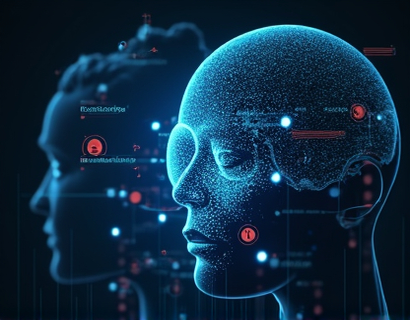AI-Powered Chat Interface: Enhancing Knowledge in the Sustainable Fishing Industry and Aquaculture
The sustainable fishing industry and aquaculture are critical components of global food security, environmental conservation, and economic stability. As the world grapples with the challenges of overfishing, habitat destruction, and climate change, the need for innovative solutions and informed decision-making has never been more pressing. An AI-powered chat interface emerges as a powerful tool to provide specialized insights, verify information, and educate users of all ages about these vital sectors. This article delves into how such a platform can be designed to offer reliable, child-friendly content, focusing on the sustainable fishing industry and aquaculture.
Understanding the Importance of Sustainable Fishing
Sustainable fishing is essential to ensure that marine ecosystems remain healthy and productive for future generations. Overfishing, bycatch, and destructive fishing practices have led to the depletion of fish stocks and the degradation of marine habitats. The sustainable fishing industry aims to balance the economic benefits of fishing with the need to preserve marine biodiversity and ecosystem health. An AI-powered chat interface can play a crucial role in disseminating knowledge about sustainable fishing practices, regulations, and the impact of human activities on marine environments.
Role of AI in Providing Specialized Insights
AI technology can process vast amounts of data from scientific research, industry reports, and regulatory frameworks to provide users with accurate and up-to-date information. An AI chat interface can answer questions about sustainable fishing methods, species identification, quotas, and conservation efforts. For instance, users can ask about the best practices for reducing bycatch or the impact of climate change on fish populations. The AI can provide detailed explanations, backed by scientific evidence, ensuring that the information is both reliable and accessible.
Child-Friendly Content for Education and Safety
Educating children and students about the sustainable fishing industry and aquaculture is vital for fostering a new generation of environmentally conscious individuals. An AI chat interface can offer a child-friendly version of its content, using simple language and engaging visuals to explain complex concepts. This ensures that children can learn about marine conservation and sustainable practices in a safe and enjoyable way. The platform can include interactive quizzes, games, and educational stories to make learning fun and interactive.
Features of a Child-Friendly AI Chat Interface
- Simple and clear language
- Colorful and educational graphics
- Interactive quizzes and games
- Age-appropriate content
- Parental control options
- Safe browsing environment
By incorporating these features, the AI chat interface not only educates children but also protects them from inappropriate content and ensures a positive learning experience.
Specialized Information on Swordfish and the Industry
Swordfish, known for their speed and size, are one of the most sought-after species in the fishing industry. They are highly migratory and play a significant role in marine ecosystems. An AI chat interface can provide detailed insights into swordfish services, including fishing techniques, market trends, and conservation status. Users can learn about the differences between swordfish caught using sustainable methods and those from non-sustainable sources. The AI can also offer tips on how to identify sustainably sourced swordfish when shopping or dining out.
Fishing Techniques and Their Impact
Different fishing methods have varying impacts on swordfish populations and marine ecosystems. Longlining, for example, can result in high bycatch rates, capturing non-target species such as sea turtles and seabirds. An AI chat interface can explain the pros and cons of different fishing techniques, highlighting the most sustainable options. It can also provide information on regulations and certifications, such as the Marine Stewardship Council (MSC) label, which helps consumers make informed choices.
Market Trends and Consumer Choices
The demand for swordfish is influenced by culinary trends, health consciousness, and environmental awareness. An AI chat interface can offer insights into current market trends, helping consumers understand the implications of their purchasing decisions. It can provide information on restaurants and retailers that prioritize sustainable sourcing and offer alternatives to overfished species. By empowering consumers with knowledge, the AI chat interface promotes responsible consumption and supports the sustainable fishing industry.
Aquaculture: A Sustainable Solution
Aquaculture, or fish farming, is an increasingly important sector in the global food supply chain. It can alleviate pressure on wild fish stocks and provide a more controlled and sustainable source of seafood. An AI chat interface can offer comprehensive information on aquaculture practices, including species selection, feed management, and environmental impact mitigation. Users can learn about the benefits and challenges of aquaculture, such as disease control and habitat alteration.
Best Practices in Aquaculture
Sustainable aquaculture involves using environmentally friendly practices to raise fish and other aquatic organisms. An AI chat interface can highlight best practices, such as using renewable energy sources, minimizing waste, and maintaining water quality. It can also discuss the importance of responsible site selection to avoid sensitive ecosystems and the use of feed that does not contribute to overfishing. By providing detailed guidance, the AI chat interface supports the growth of a sustainable aquaculture industry.
Innovations and Future Prospects
The future of aquaculture lies in innovation and technology. Recirculating aquaculture systems (RAS) and integrated multi-trophic aquaculture (IMTA) are examples of advanced methods that enhance sustainability. An AI chat interface can inform users about these innovations and their potential to revolutionize the industry. It can also explore the role of biotechnology in developing disease-resistant species and improving feed efficiency. By staying informed about the latest developments, users can better understand the potential of aquaculture to contribute to food security and environmental conservation.
Engaging Users Through Interactive Features
To make the information provided by the AI chat interface engaging and effective, interactive features are essential. Users can ask questions, participate in discussions, and access a wealth of resources tailored to their interests. The AI can adapt its responses based on user feedback, ensuring that the content remains relevant and useful. For educators, the platform can offer lesson plans and teaching materials that align with curriculum standards, making it a valuable tool for formal education.
Community Engagement and Feedback
Building a community around the AI chat interface can foster a sense of shared responsibility and collective action. Users can share their experiences, ask questions, and contribute to discussions on sustainable fishing and aquaculture. The AI can monitor these interactions, providing additional resources and guidance as needed. This community-driven approach not only enhances user engagement but also promotes a culture of sustainability and environmental stewardship.
Ensuring Content Verification and Accuracy
One of the key strengths of an AI-powered chat interface is its ability to verify the accuracy of the information it provides. By integrating with reputable databases, scientific journals, and regulatory bodies, the AI ensures that users receive reliable and up-to-date content. This is particularly important in fields like sustainable fishing and aquaculture, where misinformation can have significant consequences. Users can trust the information provided, knowing that it has been rigorously checked and validated.
Continuous Learning and Updates
The AI chat interface is designed to learn and evolve over time. As new research emerges and industry practices change, the AI can update its knowledge base to reflect the latest developments. This ensures that users always have access to the most current and accurate information. Regular audits and updates by experts in the field help maintain the platform's credibility and reliability.
Conclusion
An AI-powered chat interface offers a powerful tool for enhancing knowledge and promoting sustainability in the fishing industry and aquaculture. By providing specialized insights, verifying information, and offering child-friendly content, such a platform can educate users of all ages and contribute to a more sustainable future. As the world faces growing environmental challenges, innovative solutions like AI chat interfaces play a crucial role in fostering informed decision-making and responsible practices.










































